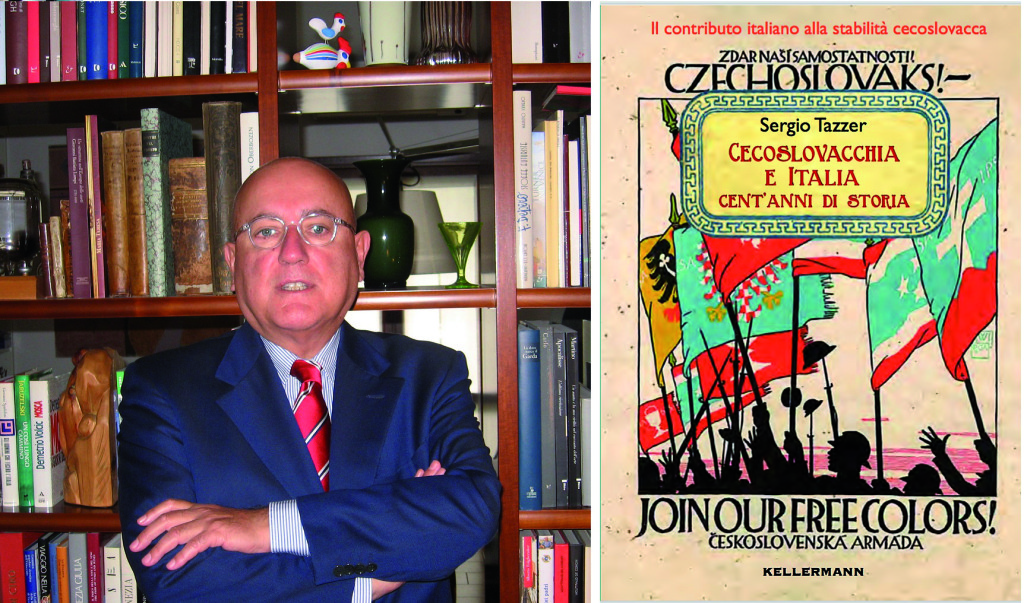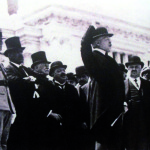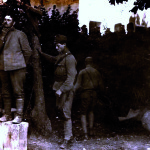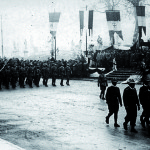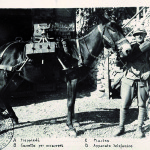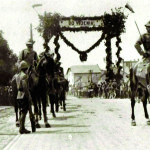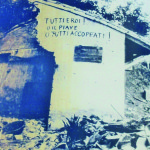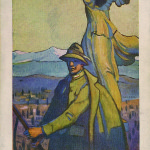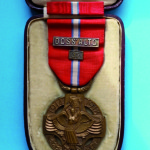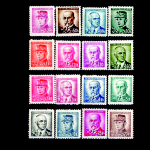The often overlooked or even misunderstood role that Italy had in 1918 for Czech-Slovak independence. We talked about it with journalist and historian Sergio Tazzer
A nest of interests, hopes, dreams, fears: this is the Europe that came out of the First World War. The “great ghost” that characterized the peace of Versailles was precisely the Austro-Hungarian Empire, an absent stone guest of the peace congress. The empire was the complex construction from which the so-called Danubian nations were born, including Czechoslovakia.
The occasion of the Centenary of the birth of the independent State with capital Prague (1918), has seen the development of new currents of historiographical research, with the debate intensified not only among Central European scholars, but also for the fatal coincidence with two other exquisitely Czech anniversaries: the Russian invasion of August 1968 and the consequent end of the “Prague Spring”, but also the coup d’etat of February 1948, which saw the emergence of a communist government at the Castle.
From the Italian point of view, the celebrations and festivities of this year should serve precisely the purpose of reaffirming the role of our country, and the relations interwoven by the Rome government and the politicians of the time, with the Czech-Slovak patriots leading to the birth of the new Czechoslovak state. The decisive importance of Italy, is a role often overlooked or even misunderstood.
Among the various scholars involved in the debate, which also involved the Slovak capital, Bratislava, the role of journalist and historian Sergio Tazzer, who has been dealing with these issues for years, stands out in particular. In his book “Czechoslovakia and Italy. Hundred Years of History”, (Kellermann editore), Tazzer describes from the inside the projects, intrigues, and hopes of those who were the real protagonists of those months in which history sizzled.
“Having escaped from the borders of the Empire, where they risked being shot for treason, the patriots first took refuge in neutral Switzerland, then especially in Rome and Paris, and also, but to a lesser extent, in London. It was from these capitals that the threads of the canvas were disentangled, which would lead to the creation of independent Czechoslovakia”, underlines Tazzer, who has long focused his studies on the relations between Prague and Rome, and it is precisely on the basis of these investigations that he was unable to resist, faced with too many simplifications and omissions that characterize the topic, to dot the i’s and cross the t’s.
“In fact, the book was born almost by chance”, the scholar explains, “while I was watching a Czech TV documentary, dedicated to the countries that contributed to the Czechoslovak independence of 1918. The role of the United States President Woodrow Wilson was highlighted much, as was the France of Georges Clemenceau, but no word on Italy. I felt annoyed, but it also made me reflect on how often our country is unable to value its own merits, losing and continuing to miss historical occasions”.
How did the heated and decisive months of 1918 really go?
“Firstly, we must clarify that it was precisely the war effort of Italy that accelerated the end of the conflict, which all observers predicted to be in the spring of 1919. The Italian army at the end of October 1918 anticipated the offensive, causing the collapse of Austro-Hungarian forces, which retreated disorderly towards the Alps and pushing Vienna to begin preparations for the armistice request. The birth of the Danubian states, on the ashes of the Austro-Hungarian Empire, was favored precisely by that climate of absolute confusion. But Italy, as often is the case, could not lead the game”.
The fact remains that the three protagonists were Tomáš Garrigue Masaryk, Milan Rastislav Štefánik and Edvard Beneš.
“There is no doubt! However, it is often forgotten that as early as 1915-16, during the First World War, some important Italian politicians had close relations with the Czech and Slovak exiles, who had escaped from the territory of the Empire. The expatriates, I repeat, had taken refuge first in Geneva, then also in Rome and Milan, as well as in Paris and, much less, in London. In Italy they were well received, subsidized by our secret services, equipped with weapons and offices to organize themselves. It was in Rome where the Italo-Czechoslovak League was born in 1917. It was in Rome where the first newspapers of Czech irredentism were printed; it was again in Italy where they located and trained the patriots to turn them into real soldiers with the establishment of the Czech-Slovak Legion in Italy, and it was again in our capital where the crowded Congress of oppressed peoples was held. That meeting was a real success, which all the European chancelleries had to take into account”.
In short, the Kingdom of Italy decided to marry the Czech and Slovak cause?
“In some respects, yes, but not all politicians shared the idea. Initially more of the supporters were men of the Left: Leonida Bissolati, Gaetano Salvemini and Cesare Battisti. It was precisely the interventionist socialist Salvemini who coined the slogan “Delenda Austria”, that is to say the end of the Habsburg monarchy and the formation of new states in Central-Eastern and South-Eastern Europe on the basis of the principle of nationality. Other politicians remained colder. This was the case with our foreign minister, the conservative Sidney Sonnino. Despite the war, Sonnino considered the Austro-Hungarian Empire as an element of stability for the new Europe that was emerging. A mistake in perspective that we would then pay dearly for, at the table of peace”.
And after the end of hostilities how did Italian support arise?
“When the first Czechoslovak government was formed, in Prague there was no real military formation to defend the new government. It was indeed the Italians who, in the meantime, had organized and armed the Czechoslovak Legion of General Luigi Piccione. And from Padua, where it was headquartered, the Legion was sent to Prague on Italian trains, under an armed Italian escort. Meanwhile, in France, Czech exiles were still abandoned to themselves, while the Paris government had not yet officially decided on its position. A clear difference in attitudes that today we forget too easily”.
Who was the man closest to Italy at that moment?
“Definitely Milan Rastislav Štefánik. He was a Slovak, a supporter of the birth of a federalist state. But Štefánik eventually died in a mysterious plane crash at the Bratislava airport, the airport that bears his name today. And the centralist hypothesis proposed by Edvard Beneš prevailed. A man much closer to French positions and interests, Beneš would become the acclaimed “father of the fatherland”, and would increasingly tighten his ties with Paris”.
The famous difference between “Czechoslovakia” and “Czech-Slovakia”: often, however, the common reader does not understand the nuance.
“But that remains decisive, Tazzer insists. “Behind that indent two deep visions in conceiving the new state can be seen. One, refers only to Prague, and therefore emphasizes the Bonapartist centralism; the other, instead, thinks of a federal state, the result of an “equal” alliance between two peoples, the Czechs and the Slovaks. Often unspoken, if not canceled, these two tendencies will re-emerge overwhelmingly at different times in the history of the country”.
What does the Czechoslovak affair teach us, as Italians?
“Firstly, it shows how often economic reasons prevail over those ideals: France was already a great power, and decided at the right time, to appear as the godmother of the Danubian peoples. Yet, it did so with all the means at its disposal, including a policy of strong cultural connection. We put a lot of goodwill and commitment into the Czech cause. However, these benefits were not enough to make us appear as true protagonists”.
by Ernesto Massimetti





